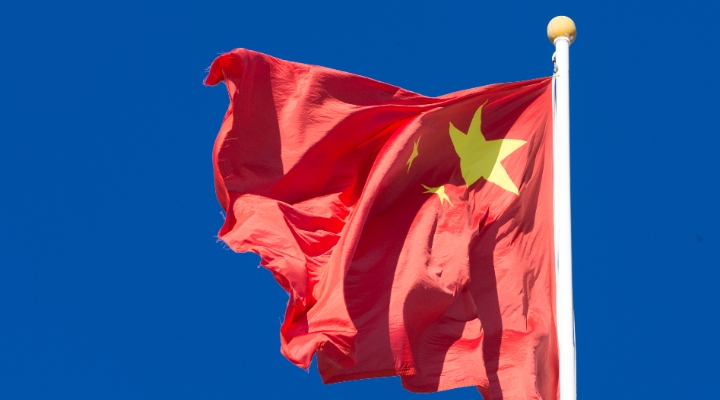
There is a growing perception that China’s seemingly irresistible rise is set to slow. In a 2017 study, Morningstar anticipated obstacles to China’s ongoing growth. “China is far from the first country to endure slowing economic growth following its ascent from agrarian poverty to middle-income status,” said the study. “Many see growth eventually stagnate, a phenomenon economists term the ‘middle-income trap’,” it continues. “While we don't think China is especially likely to fall into the middle-income trap, the odds of escape aren't great.”
“I’d say the key factors which are associated with slowing growth in middle-income countries are still at play for China,” says Morningstar economist Preston Caldwell. “Fraying trade relations have only added to causes of China’s growth slowdown. The main causes are domestic. An ageing population means a shrinking workforce. Capital stock growth has to slow as the country has already invested far too much. And total factor productivity growth is likely to be mediocre compared to the country’s last couple decades.”
In a recent report, Caldwell adds: “We think China is now on a permanently slower growth path. We expect GDP growth to fall to 4% in 2022 and average 3.3% over the full 2019-30 period. We've long argued that China's investment boom is unsustainable. Recent government policies have led to a slowdown in the debt growth that has fueled this investment boom, particularly in sectors such as real estate. We're also concerned about a potential shift away from China's free-market reforms, evidenced by notable crackdowns on large corporations and wealthy businesspeople.”
Caldwell’s growth projections are a bit more bearish than Bloomberg’s most bearish forecast of a 4.1% growth from 2021 to 2030. However, Bloomberg throws a more negative light on China, claiming that it is set to stagnate indefinitely. China might be staging “hurrah” events to make the rest of the world believe that the country is at the top of its game and set to overtake the world economy, but major obstacles are piling up which China most probably won’t overcome. Bloomberg points to the same obstacles Caldwell highlights, but throws in an additional hurdle: a looming financial crisis thanks to a credit-to-GDP ratio that has shot up from 140% in 2008 to 290% today.
Saving the Party – or the Economy
An article from the American Institute for Economic Research latches on the political side of the issue, highlighting a basic contradiction China faces. “In order to remain in power, the CCP (Chinese Communist Party) must maintain strict control over civil and economic life, but doing so will stunt growth and potentially lead to popular discontent. If China wishes to continue growing and maintain its power in the world, it must pursue further liberalization and globalization, which will likely lead to greater loss of power for the CCP domestically and potentially greater social unrest due to an influx of foreign influences.”
Slower But Not Stopping
Gordon Houlden, director emeritus of the China Institute, says there isn’t a single drawback outlined above he would disagree with. But he quickly points out countervailing arguments. One is the massive influx to the Chinese economy of people coming in from agricultural regions. Indeed, there is a demographic deficit, “but that influx has certainly not run its full course,” he says. True, there is a chip problem, but then “Koreans and Taiwanese don’t want to drive themselves out of business.” And for the present regulatory crackdown, is the CCP behaving that differently from the U.S. government and “its long history of anti-trust action?” Ultimately, he agrees with Caldwell: “Slowing growth is more likely than a tailspin.”
The issue of China’s continuing or interrupted growth is of utmost importance for investors, points out Gordon Houlden, director emeritus of the China Institute, but “There’s a big difference,” he says, between saying: ‘I want to reduce my investments in China because prospects there are dimming’, and saying ‘I want to pull out because China will collapse’”.
In the long run, increased competition might be a healthy development, but we could also see greater earnings volatility in the near term, states a recent Capital Group commentary. On the other hand, the report points out: “While certain industries face heightened uncertainty, other areas that are more aligned with the government’s priorities may present investment opportunities.” Sectors to keep an eye on, he says, are green energy, electrical vehicles, pharmaceuticals, software and information technologies.
India Awaiting
Houlden witnesses “a strong appetite to throw blame at China, something I see increasingly in Canada”, he says. This could cause wear and tear on the Chinese economy, which could lose pieces to India. Already, that country has carved a huge place for itself in the U.S. and Canada’s economies: “Most large U.S. companies now rely heavily on India-based IT services,” notes a report by the Information Technology and Innovation Foundation, indicating that “more than 2 million people of Indian nationality are now working to meet the IT needs of U.S. corporations. CGI Group, Canada’s largest IT company, draws considerably on that talent pool.
Manufacturing is now a key area of cooperative development. “America and India are both rightly keen to move more manufacturing operations from China to India,” says the ITIF report. India is set to intensify that drive, reports Dhaval Kapadia, director, portfolio specialist, at Morningstar Investment Adviser. In March 2020, India launched the “Production-linked Incentive Scheme”, a US$ 26 billion initiative targeting 13 manufacturing sectors “with incentives based on the incremental growth in sales of products manufactured in domestic units,” Kapadia points out. At the same time, he adds, “India is working to increase the ease of doing business in countless areas, going from buying land to setting up electricity connections.”
Watch out, warns ITIF. As India is an essential counterweight to China, it stands to become the next great U.S. – and Canadian - dependency. After experiencing the considerable distress that uncoupling from China has produced and continues to produce, perhaps North America would do well to measure the degree of dependence it wants to develop with India. At the same time, India is a democracy with an open market in which there aren’t many of the contrived irritants and obstacles that one finds in China, points out Kapadia.












.png)









